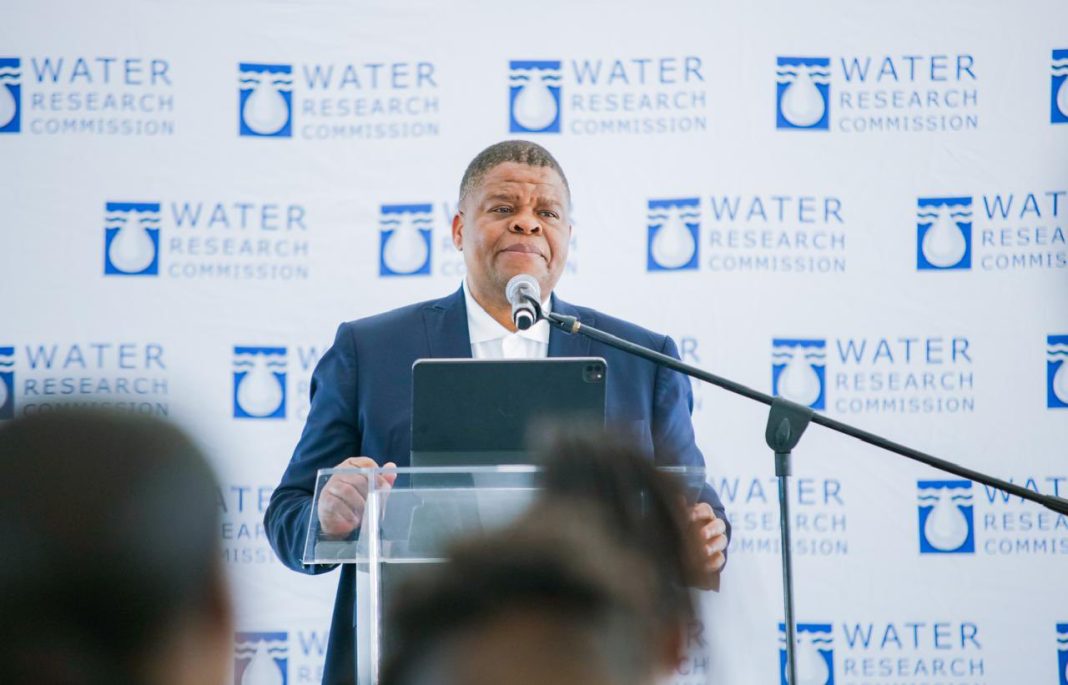By Nkhensani Chauke
Deputy Minister of Water and Sanitation, David Mahlobo, has commended the Water Research Commission (WRC) for its continued investment in innovative technologies to tackle South Africa’s water challenges, following the launch of the Vortex Settling Basin (VSB).
Mahlobo explained that the VSB is an advanced water treatment system that employs vortex flow technology to remove sediments, suspended solids, and pollutants from water.
The system operates on the principle of centrifugal force, which enables heavier particles to settle at the bottom of the basin, while cleaner water is discharged from the top.
Through its vortex action, the VSB forms a cone-shaped sediment deposit, allowing for efficient separation.
The settled particles are then removed by gravity, while the clarified water exits via a discharge weir.
“The VSB effectively removes heavy sediment particles through its vortex action, causing the sediments to settle in a cone shape. These particles can then be extracted by gravity, while the clearer water flows out over a discharge weir,” said Mahlobo.
“This technology will help the municipality with an energy-efficient solution for sediment removal, ensuring a reliable water supply with minimal maintenance. The vortex is at 90% efficiency, which means there will be more water to treat, thus increasing water security in the area. The technology will also ensure good water quality because the turbidity of water will be addressed.”
The VSB was officially launched and handed over at the Thukela River abstraction works in Middledrift, Nkandla, KwaZulu-Natal.
“This launch marks the beginning of a demonstration phase, during which the system’s effectiveness will be closely monitored for potential wider implementation,” said Mahlobo.
The VSB, which has a pump capacity of 8.6 megalitres per day, is expected to benefit a broad range of stakeholders, particularly those dependent on surface water abstraction for agricultural, municipal, and industrial purposes.
Mahlobo assured community members that the municipality has acquired a cost-effective technology that will also support further desilting efforts by removing sediment from dams.
He explained that the Madungela site was chosen for the demonstration due to several key factors: the high sediment load from the catchment downstream of Spioenkop Dam, the direct abstraction of raw water from the Thukela River without a gravel trap, and the existing use of hydro-cyclones for sediment removal.
These conditions make it an ideal location to evaluate the performance of the VSB.
Mahlobo urged the community to safeguard the VSB, noting its long-term benefits.
Water Research Commission Chief Executive, Dr Jennifer Molwantwa, emphasised the broader significance of the project, particularly for underserved rural areas.
“This kind of work is critically important for the WRC, as it demonstrates our ability to translate theoretical scientific innovations into practical applications—not just at laboratory scale, but also in real-world settings,” said Molwantwa.
“We are hopeful that this innovation will lead to a future where all municipalities and bulk water suppliers adopt it as a groundbreaking technology—one capable of significantly improving the efficiency and capacity of water treatment systems across the country, especially in rural communities where access to reliable and sustainable water services is often limited.”
INSIDE METROS

